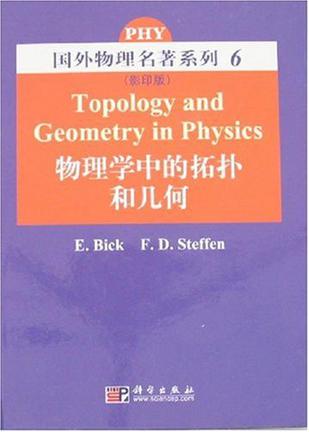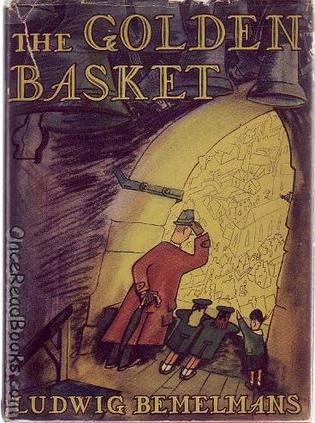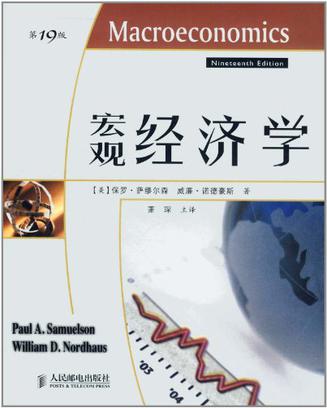 物理学中的拓扑和几何txt,chm,pdf,epub,mobi下载
物理学中的拓扑和几何txt,chm,pdf,epub,mobi下载作者: E.Bick,F.D.Stef 出版社: 科学 出版年: 2007-4 页数: 358 定价: 65.00元 丛书: 国外物理名著系列(科学出版社影印) ISBN: 9787030187864 内容简介 · · · · · ·《物理学中的拓扑和几何(影印版)》主要内容包括:拓扑和几何的概念与方法在物理学中的应用有助于加深人们对物理学的许多重要领域(如凝聚态物理、宇宙学、引力和粒子物理)的理解,《物理学中的拓扑和几何(影印版)》是一本关于几何和拓扑在这些领域中的应用与发展的高级教材,书中分章节相对独立地介绍了规范理论、BRST量子化、手性异常、超对称孤子和非交换几何中的拓扑概念。《物理学中的拓扑和几何(影印版)》适用于相关专业的研究生、对本领域感兴趣的读者以及讲授相关课程的教师。 目录 · · · · · ·Introduction and OverviewE.Bick, F.D.Steffen1、Topology and Geometry in Physics2、An Outline of the Book3、Complementary LiteratureTopological Concepts in Gauge TheoriesF.Lenz1、Introduction2、Nielsen-Olesen Vortex 2.1 Abelian Higgs Model 2.2 Topological Excitations3、Homotopy 3.1 The Fundamental Group 3.2 Higher Homotopy Groups 3.3 Quotient Spaces 3.4 Degree of Maps 3.5 Topological Groups 3.6 Transformation Groups 3.7 Defects in Ordered Media4、Yang-Mills Theory5、't Hooft-Polyakov Monopole 5.1 Non-Abelian Higgs Model 5.2 The Higgs Phase 5.3 Topological Excitations6、Quantization of Yang-Mills Theory7、Instantons 7.1 Vacuum Degeneracy 7.2 Tunneling 7.3 Fermions in Topologically Non-trivial Gauge Fields 7.4 Instanton Gas 7.5 Topological Charge and Link Invariants8、Center Symmetry and Confinement 8.1 Gauge Fields at Finite Temperature and Finite Extension 8.2 Residual Gauge Symmetries in QED 8.3 Center Symmetry in SU(2) Yang-Mills Theory 8.4 Center Vortices 8.5 The Spectrum of the SU(2) Yang-Mills Theory9、QCD in Axial Gauge 9.1 Gauge Fixing 9.2 Perturbation Theory in the Center-Symmetric Phase 9.3 Polyakov Loops in the Plasma Phase 9.4 Monopoles 9.5 Monopoles and Instantons 9.6 Elements of Monopole Dynamics 9.7 Monopoles in Diagonalization Gauges10、ConclusionsAspects of BRST QuantizationJ.W.van Holten1、Symmetries and Constraints 1.1 Dynamical Systems with Constraints 1.2 Symmetries and Noether's Theorems 1.3 Canonical Formalism 1.4 Quantum Dynamics 1.5 The Relativistic Particle 1.6 The Electro-magnetic Field 1.7 Yang-Mills Theory 1.8 The Relativistic String2、Canonical BRST Construction 2.1 Grassmann Variables 2.2 Classical BRST Transformations 2.3 Examples 2.4 Quantum BRST Cohomology 2.5 BRST-Hodge Decomposition of States 2.6 BRST Operator Cohomology 2.7 Lie-Algebra Cohomology3、Action Formalism 3.1 BRST Invariance from Hamilton's Principle 3.2 Examples 3.3 Lagrangean BRST Formalism 3.4 The Master Equation 3.5 Path-Integral Quantization4、Applications of BRST Methods 4.1 BRST Field Theory 4.2 Anomalies and BRST CohomologyAppendix.ConventionsChiral Anomalies and TopologyJ.Zinn-Justin1、Symmetries, Regularization, Anomalies2、Momentum Cut-Off Regularization 2.1 Matter Fields:Propagator Modification 2.2 Regulator Fields 2.3 Abelian Gauge Theory 2.4 Non-Abelian Gauge Theories3、Other Regularization Schemes 3.1 Dimensional Regularization 3.2 Lattice Regularization 3.3 Boson Field Theories 3.4 Fermions and the Doubling Problem4、The Abelian Anomaly 4.1 Abelian Axial Current and Abelian Vector Gauge Fields 4.2 Explicit Calculation 4.3 Two Dimensions 4.4 Non-Abelian Vector Gauge Fields and Abelian Axial Current 4.5 Anomaly and Eigenvalues of the Dirac Operator5、Instantons, Anomalies, and θ-Vacua 5.1 The Periodic Cosine Potential 5.2 Instantons and Anomaly:CP(N-1) Models 5.3 Instantons and Anomaly:Non-Abelian Gauge Theories 5.4 Fermions in an Instanton Background6、Non-Abelian Anomaly 6.1 General Axial Current 6.2 Obstruction to Gauge Invariance 6.3 Wess-Zumino Consistency Conditions7、Lattice Fermions:Ginsparg-Wilson Relation 7.1 Chiral Symmetry and Index 7.2 Explicit Construction:Overlap Fermions8、Supersymmetric Quantum Mechanics and Domain Wall Fermions 8.1 Supersymmetric Quantum Mechanics 8.2 Field Theory in Two Dimensions 8.3 Domain Wall FermionsAppendix A. Trace Formula for Periodic PotentialsAppendix B. Resolvent of the Hamiltonian in Supersymmetric QMSupersymmetric Solitons and TopologyM.Shifman1、Introduction2、D= 1+1;N=1 2.1 Critical(BPS) Kinks 2.2 The Kink Mass (Classical) 2.3 Interpretation of the BPS Equations.Morse Theory 2.4 Quantization.Zero Modes:Bosonic and Fermionic 2.5 Cancelation of Nonzero Modes 2.6 Anomaly Ⅰ 2.7 Anomaly Ⅱ(Shortening Supermultiplet Down to One State)3、Domain Walls in (3+1)-Dimensional Theories 3.1 Superspace and Superfields 3.2 Wess Zumino Models 3.3 Critical Domain Walls 3.4 Finding the Solution to the BPS Equation 3.5 Does the BPS Equation Follow from the Second Order Equation of Motion? 3.6 Living on a Wall4、Extended Supersymmetry in Two Dimensions:The Supersymmetric CP(1) Model 4.1 Twisted Mass 4.2 BPS Solitons at the Classical Level 4.3 Quantization of the Bosonic Moduli 4.4 The Soliton Mass and Holomorphy 4.5 Switching On Fermions 4.6 Combining Bosonic and Fermionic Moduli5、ConclusionsAppendix A. CP(1) Model=O(3) Model (Af=1 Superfields N)Appendix B. Getting Started (Supersymmetry for Beginners) B.1 Promises of Supersymmetry B.2 Cosmological Term B.3 Hierarchy ProblemForces from Connes' GeometryT.Schiicker1、Introduction2、Gravity from Riemannian Geometry 2.1 First Stroke:Kinematics 2.2 Second Stroke:Dynamics3、Slot Machines and the Standard Model 3.1 Input 3.2 Rules 3.3 The Winner 3.4 Wick Rotation4、Connes' Noncommutative Geometry 4.1 Motivation:Quantum Mechanics 4.2 The Calibrating Example:Riemannian Spin Geometry 4.3 Spin Groups5、The Spectral Action 5.1 Repeating Einstein's Derivation in the Commutative Case 5.2 Almost Commutative Geometry 5.3 The Minimax Example 5.4 A Central Extension6、Connes' Do-It-Yourself Kit 6.1 Input 6.2 Output 6.3 The Standard Model 6.4 Beyond the Standard Model7、Outlook and ConclusionAppendix A.1 Groups A.2 Group Representations A.3 Semi-Direct Product and Poincare Group A.4 AlgebrasIndexIntroduction and OverviewE.Bick, F.D.Steffen1、Topology and Geometry in Physics2、An Outline of the Book3、Complementary LiteratureTopological Concepts in Gauge TheoriesF.Lenz1、Introduction2、Nielsen-Olesen Vortex 2.1 Abelian Higgs Model 2.2 Topological Excitations3、Homotopy 3.1 The Fundamental Group 3.2 Higher Homotopy Groups 3.3 Quotient Spaces 3.4 Degree of Maps 3.5 Topological Groups 3.6 Transformation Groups 3.7 Defects in Ordered Media4、Yang-Mills Theory5、't Hooft-Polyakov Monopole 5.1 Non-Abelian Higgs Model 5.2 The Higgs Phase 5.3 Topological Excitations6、Quantization of Yang-Mills Theory7、Instantons 7.1 Vacuum Degeneracy 7.2 Tunneling 7.3 Fermions in Topologically Non-trivial Gauge Fields 7.4 Instanton Gas 7.5 Topological Charge and Link Invariants8、Center Symmetry and Confinement 8.1 Gauge Fields at Finite Temperature and Finite Extension 8.2 Residual Gauge Symmetries in QED 8.3 Center Symmetry in SU(2) Yang-Mills Theory 8.4 Center Vortices 8.5 The Spectrum of the SU(2) Yang-Mills Theory9、QCD in Axial Gauge 9.1 Gauge Fixing 9.2 Perturbation Theory in the Center-Symmetric Phase 9.3 Polyakov Loops in the Plasma Phase 9.4 Monopoles 9.5 Monopoles and Instantons 9.6 Elements of Monopole Dynamics 9.7 Monopoles in Diagonalization Gauges10、ConclusionsAspects of BRST QuantizationJ.W.van Holten1、Symmetries and Constraints 1.1 Dynamical Systems with Constraints 1.2 Symmetries and Noether's Theorems 1.3 Canonical Formalism 1.4 Quantum Dynamics 1.5 The Relativistic Particle 1.6 The Electro-magnetic Field 1.7 Yang-Mills Theory 1.8 The Relativistic String2、Canonical BRST Construction 2.1 Grassmann Variables 2.2 Classical BRST Transformations 2.3 Examples 2.4 Quantum BRST Cohomology 2.5 BRST-Hodge Decomposition of States 2.6 BRST Operator Cohomology 2.7 Lie-Algebra Cohomology3、Action Formalism 3.1 BRST Invariance from Hamilton's Principle 3.2 Examples 3.3 Lagrangean BRST Formalism 3.4 The Master Equation 3.5 Path-Integral Quantization4、Applications of BRST Methods 4.1 BRST Field Theory 4.2 Anomalies and BRST CohomologyAppendix.ConventionsChiral Anomalies and TopologyJ.Zinn-Justin1、Symmetries, Regularization, Anomalies2、Momentum Cut-Off Regularization 2.1 Matter Fields:Propagator Modification 2.2 Regulator Fields 2.3 Abelian Gauge Theory 2.4 Non-Abelian Gauge Theories3、Other Regularization Schemes 3.1 Dimensional Regularization 3.2 Lattice Regularization 3.3 Boson Field Theories 3.4 Fermions and the Doubling Problem4、The Abelian Anomaly 4.1 Abelian Axial Current and Abelian Vector Gauge Fields 4.2 Explicit Calculation 4.3 Two Dimensions 4.4 Non-Abelian Vector Gauge Fields and Abelian Axial Current 4.5 Anomaly and Eigenvalues of the Dirac Operator5、Instantons, Anomalies, and θ-Vacua 5.1 The Periodic Cosine Potential 5.2 Instantons and Anomaly:CP(N-1) Models 5.3 Instantons and Anomaly:Non-Abelian Gauge Theories 5.4 Fermions in an Instanton Background6、Non-Abelian Anomaly 6.1 General Axial Current 6.2 Obstruction to Gauge Invariance 6.3 Wess-Zumino Consistency Conditions7、Lattice Fermions:Ginsparg-Wilson Relation 7.1 Chiral Symmetry and Index 7.2 Explicit Construction:Overlap Fermions8、Supersymmetric Quantum Mechanics and Domain Wall Fermions 8.1 Supersymmetric Quantum Mechanics 8.2 Field Theory in Two Dimensions 8.3 Domain Wall FermionsAppendix A. Trace Formula for Periodic PotentialsAppendix B. Resolvent of the Hamiltonian in Supersymmetric QMSupersymmetric Solitons and TopologyM.Shifman1、Introduction2、D= 1+1;N=1 2.1 Critical(BPS) Kinks 2.2 The Kink Mass (Classical) 2.3 Interpretation of the BPS Equations.Morse Theory 2.4 Quantization.Zero Modes:Bosonic and Fermionic 2.5 Cancelation of Nonzero Modes 2.6 Anomaly Ⅰ 2.7 Anomaly Ⅱ(Shortening Supermultiplet Down to One State)3、Domain Walls in (3+1)-Dimensional Theories 3.1 Superspace and Superfields 3.2 Wess Zumino Models 3.3 Critical Domain Walls 3.4 Finding the Solution to the BPS Equation 3.5 Does the BPS Equation Follow from the Second Order Equation of Motion? 3.6 Living on a Wall4、Extended Supersymmetry in Two Dimensions:The Supersymmetric CP(1) Model 4.1 Twisted Mass 4.2 BPS Solitons at the Classical Level 4.3 Quantization of the Bosonic Moduli 4.4 The Soliton Mass and Holomorphy 4.5 Switching On Fermions 4.6 Combining Bosonic and Fermionic Moduli5、ConclusionsAppendix A. CP(1) Model=O(3) Model (Af=1 Superfields N)Appendix B. Getting Started (Supersymmetry for Beginners) B.1 Promises of Supersymmetry B.2 Cosmological Term B.3 Hierarchy ProblemForces from Connes' GeometryT.Schiicker1、Introduction2、Gravity from Riemannian Geometry 2.1 First Stroke:Kinematics 2.2 Second Stroke:Dynamics3、Slot Machines and the Standard Model 3.1 Input 3.2 Rules 3.3 The Winner 3.4 Wick Rotation4、Connes' Noncommutative Geometry 4.1 Motivation:Quantum Mechanics 4.2 The Calibrating Example:Riemannian Spin Geometry 4.3 Spin Groups5、The Spectral Action 5.1 Repeating Einstein's Derivation in the Commutative Case 5.2 Almost Commutative Geometry 5.3 The Minimax Example 5.4 A Central Extension6、Connes' Do-It-Yourself Kit 6.1 Input 6.2 Output 6.3 The Standard Model 6.4 Beyond the Standard Model7、Outlook and ConclusionAppendix A.1 Groups A.2 Group Representations A.3 Semi-Direct Product and Poincare Group A.4 AlgebrasIndex · · · · · · () |
 首页
首页



引发思考
可能我道行比较浅,一时半会还真的无法消化
一如既往地 好看
什么也不说了